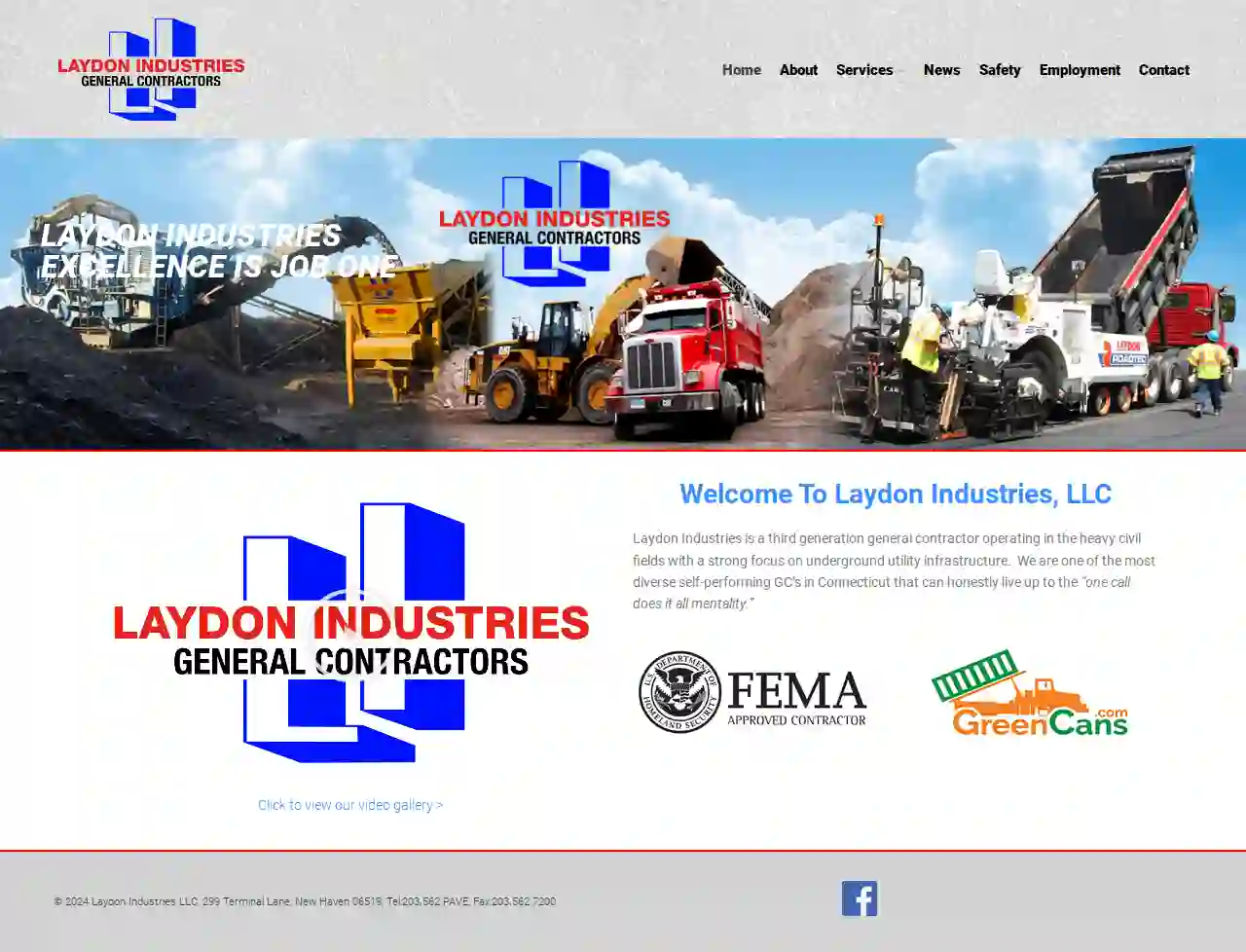Excavation Contractors Middletown
Find Excavation Contractors in Middletown
Get up to 3 Excavation Services quotes for your project today! Compare profiles, reviews, accreditations, portfolio, etc... and choose the best offer.
Service Needed
City or Town
Welcome To Laydon Industries, LLC Laydon Industries is a third generation general contractor operating in the heavy civil fields with a strong focus on underground utility infrastructure. We are one of the most diverse self-performing GC’s in Connecticut that can honestly live up to the “one call does it all mentality.”
- Services
- Why Us?
- Gallery
- Services
- Why Us?
- EnMiddletown, US
- Services
- Why Us?
- DEMiddletown, US
- Services
- Why Us?
Over 8,502+ Demolition Contractors registered
Our demolition companies operate in Middletown and beyond!
DemolitionMatch has curated and vetted Top Demolition Contractors arround Middletown. Find the most trustworthy pro today.
Frequently Asked Questions About Excavation Contractors
Need help with an excavation project? Find answers to common questions about excavation contractors and hiring excavation services in USA.
- Compact Excavators: Ideal for smaller residential projects, landscaping, and work in confined spaces.
- Standard Excavators: Versatile machines for a wide range of projects, including digging foundations, trenching, and loading materials.
- Large Excavators: Used for heavy-duty excavation, demolition, and large-scale construction projects.
- Long-Reach Excavators: Designed for demolition and excavation in hard-to-reach areas, such as tall buildings or deep trenches.
- Marking the Perimeter: The basement area is accurately marked out.
- Topsoil Removal: The topsoil is carefully removed and set aside for later use.
- Excavation: An excavator digs to the required depth, removing soil in a controlled manner.
- Foundation Preparation: The excavated area is leveled and prepared for the foundation to be poured. Safety is paramount during basement excavation. Proper shoring or sloping techniques are crucial to prevent trench collapses.
What is cut and fill excavation?
Cut and fill excavation is a technique where soil from higher areas of the site (cut) is used to fill lower areas (fill), achieving a desired grade or elevation. It minimizes the need to import or export soil, reducing costs and environmental impact.
Do I need a permit for excavation?
Excavation permits are often required, especially for larger projects or those involving utility lines. Permits ensure the work is performed safely and complies with local regulations. Your excavation contractor can usually handle permit applications, but it's essential to confirm this and ensure they obtain the necessary permits before starting work.
What type of excavator do I need?
The type of excavator best suited for your project depends on the scope of the work:
How do you excavate for a basement?
Excavating for a basement involves these steps:
What is cut and fill excavation?
Cut and fill excavation is a technique where soil from higher areas of the site (cut) is used to fill lower areas (fill), achieving a desired grade or elevation. It minimizes the need to import or export soil, reducing costs and environmental impact.
Do I need a permit for excavation?
Excavation permits are often required, especially for larger projects or those involving utility lines. Permits ensure the work is performed safely and complies with local regulations. Your excavation contractor can usually handle permit applications, but it's essential to confirm this and ensure they obtain the necessary permits before starting work.
What type of excavator do I need?
The type of excavator best suited for your project depends on the scope of the work:
- Compact Excavators: Ideal for smaller residential projects, landscaping, and work in confined spaces.
- Standard Excavators: Versatile machines for a wide range of projects, including digging foundations, trenching, and loading materials.
- Large Excavators: Used for heavy-duty excavation, demolition, and large-scale construction projects.
- Long-Reach Excavators: Designed for demolition and excavation in hard-to-reach areas, such as tall buildings or deep trenches.
How do you excavate for a basement?
Excavating for a basement involves these steps:
- Marking the Perimeter: The basement area is accurately marked out.
- Topsoil Removal: The topsoil is carefully removed and set aside for later use.
- Excavation: An excavator digs to the required depth, removing soil in a controlled manner.
- Foundation Preparation: The excavated area is leveled and prepared for the foundation to be poured. Safety is paramount during basement excavation. Proper shoring or sloping techniques are crucial to prevent trench collapses.
